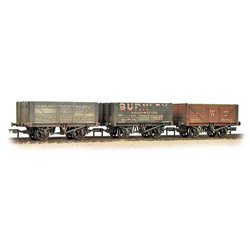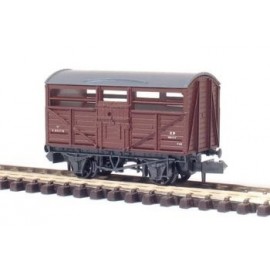The most common wood for baseboards is probably chipboard as this is relatively inexpensive. Plywood is another...
No products
Product successfully added to your shopping cart
There are 0 items in your cart. There is 1 item in your cart.
Search Tips
Christmas and New Year
We are dispatching orders every weekday apart from Christmas Day, Boxing Day and New Year's Day.
If you order is time critical, select next day delivery at checkout.
The shop in Sandown is closed from 25th December, reopening on 30th December.
What freight trains should I run?
Nowadays, freight trains are fairly uniform in their consists, industries seem to send everything in one trainload to a processing plant or further distribution centre. Inevitably that means most freight trains we see today will be wagon after wagon after wagon all looking the same and probably with a Shed (class 66) leading the way. These are easy to model, but where it gets really interesting is in the good old days of mixed freights.
Back in those golden years, the railways were what is known as 'common carriers' that means that instead of waiting to be hired to operate a full train load they would run some freight trains almost to a schedule which anyone could use to get their freight to where it needed to be. This is more significant than you might think when it comes to operating your railway realistically because presumably, your layout has a location in mind whether it be fictional or prototypical, the imagined or real locations along your branch line are going to be the recipients of the goods being delivered (or collected) and it's those businesses that will dictate what freight will be making an appearance on your railway.
You could ask yourself if your railway is portraying an industrial or rural setting, maybe it's a coastal branch line, you could also consider if the businesses along your lines would have a daily reliance on the railway or a periodic one, which businesses are in the town where your station and goods yard are located and which wagons would be destined for further down the branch. All of these questions will help you to run more interesting freight trains and give your layout an identity that goes beyond just scenery.
Some modellers even use a card or waybill system to take the decision of 'what freight is arriving today' out of their hands, a quick shuffle of the cards and their train is different every time making the operation both fun and realistic.
Whichever way you decide to operate your freights, the important thing to remember is that it doesn't have to be milk, cattle, coal, milk, cattle, coal, milk, cattle, coal. There are many models available portraying wagon loads of all kinds, shapes and sizes to fit in open-trucks or on flatbeds, so why not get creative and give your branch line a new but considered way of life?
Click here to receive the tips weekly in your mailbox. You can unsubscribe at any time.










